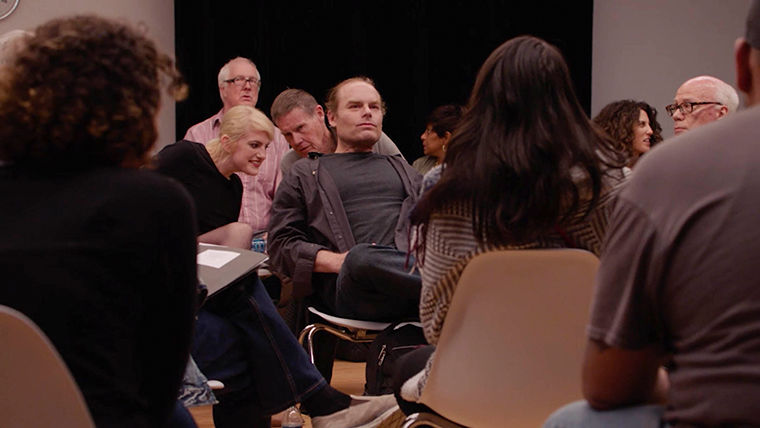Art Institute ‘Plots’ new exhibit
Courtesy ART INSTITUTE CHICAGO
Strangers practice the Tavistock method of social interaction and observation in Leigh Ledare’s film “The Task” showing at the Art Institute of Chicago, 111 S. Michigan Ave., Sept. 9–Dec. 31.
September 5, 2017
Thirty individuals sat in a circle in an empty room as a camera filmed, creating a social ecosystem that captured power structures and the complex patterns of stereotyping and identity.
That’s one component of “Leigh Ledare: The Plot—Ruttenberg Contemporary Photography Series” showing at the Art Institute of Chicago, 111 S. Michigan Ave., Sept. 9–Dec. 31. The exhibit also includes a series of collages of various magazine articles that explored these interactions.
“The Task,” a film directed by Ledare, shows social interactions between strangers in various situations throughout a conference.
Buzz Ruttenberg, co-director of the David C. and Sarajean Ruttenberg Arts Foundation, sponsored Ledare with the Ruttenberg Prize—a prestigious photography award and fellowship.
“[Ledare] is principally an artist who is exploring social interactions between people, what is within the norm and what is outside the norm,” Ruttenberg said.
Inspired by social interactions, Ledare experimented with and adapted a British methodology called the Tavistock method. The technique follows participants’ interactions in a group to help identify individual authority. Its purpose is to help develop roles for leadership. The method was created by The Tavistock Institute in London after World War I, when British soldiers were suffering from post-traumatic stress disorder, according to Mannie Sher, director of the Group Relations Program at the Tavistock Institute.
Sher said the Tavistock method became known for its applications to mental health and social reconstruction issues after the war.
“Its theory integrates the theories of psychoanalysis and its focus of unconscious dynamics and practical cognitive behavior—things you could actually see and measure,” Sher said. “But we take the view that attitude and behavior—whether of the individual, the group, the organization, the system or the environment—are motivated to a large extent by unconscious dynamics.”
In her Film Noir class, Patricia Erens, adjunct professor at the School of the Art Institute of Chicago in the Department of Art History, teaches her students the different theories used in film.
“I am trying to get the students to think about the artist that created the work, the characters that are up on the screen and how they relate to the screen based on their own emotional issues,” Erens said.
Erens said Ledare’s interest in personal and social identity will pop out in his work because he is filming the interactions.
“The interesting thing about the exhibit is that he is dealing with three different subjects: the artist creating the work, the subject who is, in a sense, being represented and then the viewer,” Erens said. “[He is] complicating it by filming all of this, so you have to think about [that].”
Ledare’s decisions to use people in Chicago should encourage the public to visit and appreciate Ledare’s endeavors differently than they would a classical painting, according to Ruttenberg. The audience will have a better understanding because it shows people like themselves interacting the way the public interacts.
“I expect many people will be quite moved because this is the ultimate reality TV,” Ruttenberg said. “It’s not TV, but a reality show that has an hour and a half of filming. People’s relationships evolve in a group and the positives and negatives of a group dynamic. It is kind of like ‘Survivor’ of the Art Institute.”







